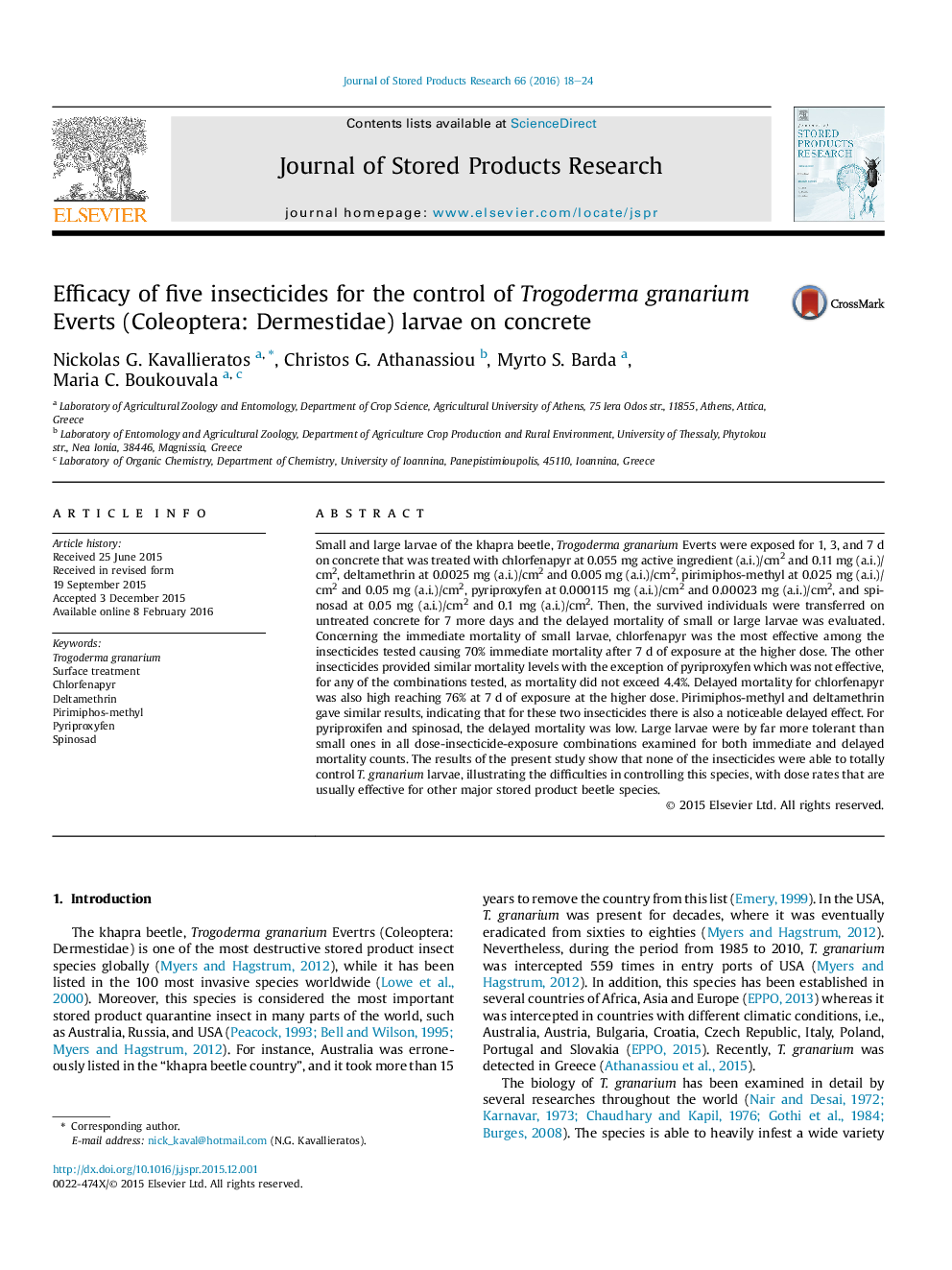| Article ID | Journal | Published Year | Pages | File Type |
|---|---|---|---|---|
| 4516987 | Journal of Stored Products Research | 2016 | 7 Pages |
•Chlorfenapyr caused 70% immediate mortality of small larvae.•Chlorfenapyr caused 76% delayed mortality of small larvae and 61.5% of large larvae.•There was a noticeable delayed effect for pirimiphos-methyl and deltamethrin.•Large larvae were by far more tolerant than small ones in all combinations examined.
Small and large larvae of the khapra beetle, Trogoderma granarium Everts were exposed for 1, 3, and 7 d on concrete that was treated with chlorfenapyr at 0.055 mg active ingredient (a.i.)/cm2 and 0.11 mg (a.i.)/cm2, deltamethrin at 0.0025 mg (a.i.)/cm2 and 0.005 mg (a.i.)/cm2, pirimiphos-methyl at 0.025 mg (a.i.)/cm2 and 0.05 mg (a.i.)/cm2, pyriproxyfen at 0.000115 mg (a.i.)/cm2 and 0.00023 mg (a.i.)/cm2, and spinosad at 0.05 mg (a.i.)/cm2 and 0.1 mg (a.i.)/cm2. Then, the survived individuals were transferred on untreated concrete for 7 more days and the delayed mortality of small or large larvae was evaluated. Concerning the immediate mortality of small larvae, chlorfenapyr was the most effective among the insecticides tested causing 70% immediate mortality after 7 d of exposure at the higher dose. The other insecticides provided similar mortality levels with the exception of pyriproxyfen which was not effective, for any of the combinations tested, as mortality did not exceed 4.4%. Delayed mortality for chlorfenapyr was also high reaching 76% at 7 d of exposure at the higher dose. Pirimiphos-methyl and deltamethrin gave similar results, indicating that for these two insecticides there is also a noticeable delayed effect. For pyriproxifen and spinosad, the delayed mortality was low. Large larvae were by far more tolerant than small ones in all dose-insecticide-exposure combinations examined for both immediate and delayed mortality counts. The results of the present study show that none of the insecticides were able to totally control T. granarium larvae, illustrating the difficulties in controlling this species, with dose rates that are usually effective for other major stored product beetle species.
